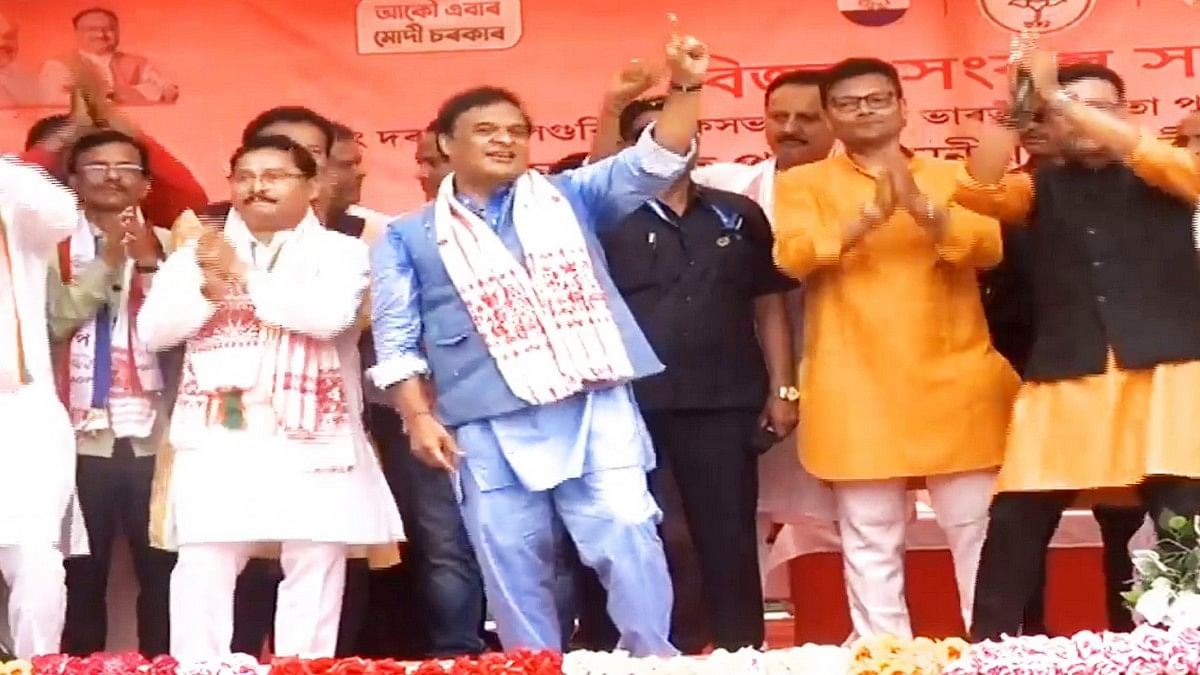Sarma’s enthusiasm to court Muslim voters is a relatively new development in the campaign, evident only since the run-up to the second phase of elections in Assam, where voting is being held in three phases for the 14 seats—19 April, 26 April, and 7 May.
Political analysts peg the shift in strategy to the demographic make-up of the constituencies that are voting across the different phases.
“After campaigning in Upper Assam and showcasing its commitment to Hinduism in the first phase, the BJP changed its strategies for the three minority-dominated constituencies of Nagaon, Mangaldoi (now Darrang-Udalguri with changes in its boundaries), and Karimganj,” said political analyst Adip Phukan. “The second phase saw a complete reversal of narrative—he is now looking at convincing the Muslim voters with promises galore.”
This election, the BJP fighting in 11 seats and its allies Asom Gana Parishad (AGP) and the United People’s Party Liberal (UPPL) are contesting in the remainder.
In the 2019 elections, the BJP won 9 out of the 10 seats it contested, losing only in Nagaon to the Congress, where over half the population is Muslim. Its allies failed to win any seats.
Now, Sarma is determined for the BJP-led NDA to secure 11 seats or more, aiming to “prove better performance under his leadership”, according to Phukan.
Days before polling in Nagaon during the second phase of voting, CM Sarma tweeted a video of a rapturous crowd—the electorate dancing along with him in Rupahihat, one of the constituency’s assembly segments. He pointed out that the seat was won continuously by “non-BJP” entities since 1957, but hinted that this was about to change now.
🗳️Assembly Segment- Rupahihat
🫂 Minority Voters : 88%
📍Since 1957- Contiously won by Cong, AIUDF and non BJP entities2024 👇 pic.twitter.com/HGh3KODeeg
— Himanta Biswa Sarma (Modi Ka Parivar) (@himantabiswa) April 23, 2024
However, political analysts say that the BJP is well aware that capturing Muslim-majority constituencies like Nagaon (57 percent Muslim), Karimganj (53 percent), and Dhubri (79 percent) won’t be a breeze. These areas have been strongholds of the Congress and AIUDF for decades.
“While the BJP feels it can win hands down in Upper Assam, it is not so confident in central Assam’s Nagaon, Lower Assam in the Brahmaputra Valley, and Cachar and Hailakandi in the Barak Valley due to the population profiles,” said political analyst and former Assam director general of police Harekrishna Deka.
Also Read: Tea tribes’ woes & Tarun Gogoi legacy — in Assam’s Jorhat, Gaurav Gogoi fights Himanta’s might
Muslim ‘appeasement’ strategy
With the BJP targeting more seats and bigger margins this election, the timing of Sarma’s whirling and twirling in certain Muslim-dominated areas is strategic.
In Assam, Muslims—including indigenous Assamese Muslims, Hindi-speaking Muslims, and those of Bengali origin, the largest subgroup—constitute over 34 percent of the population (per the 2011 Census). For each of these groups, the party has followed a calibrated strategy.
Before the first phase of polling— in Jorhat, Dibrugarh, Lakhimpur, Kaziranga, and Sonitpur— Sarma might not have seen the need to specifically court Muslim voters, according to political analysts.
“The Upper Assam region, which went to polls in the first phase, has a small population of indigenous Muslims, who might likely stand with the government, especially after the announcement of a census on indigenous Muslims last year,” noted Phukan.
Phukan was referring to the Assam cabinet’s approval last December of a socio-economic survey of the state’s indigenous Assamese Muslims, or “Khilonjiya” as they are called. This proposed survey, aimed at informing policy decisions to improve their conditions, includes the Syed, Goriya, Moriya, Desi, and Julha communities.
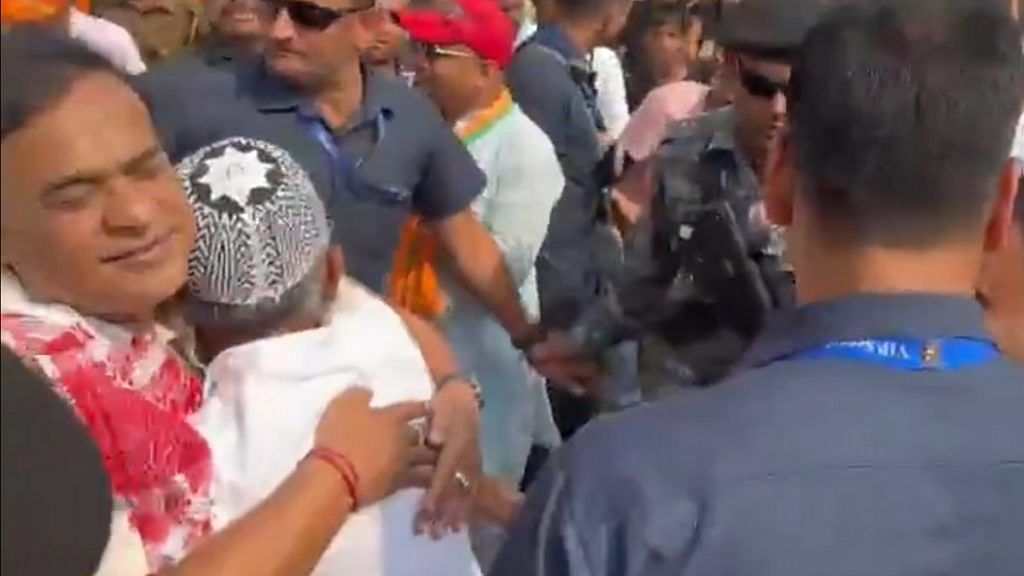
Then, in the second phase of polling, several constituencies with a sizeable Bengali-speaking Muslim population, such as Karimganj, Nagaon, and Darrang-Udalguri, went to vote. Dhubri, which also has a substantial Bengali Muslim community, will go to the polls in the third phase.
And it’s this Bengali-origin Muslim community in Brahmaputra valley, known locally as ‘Miya,’ that Sarma has made the biggest song and dance about, despite not having a particularly warm relationship with them before.
For instance, last October, Sarma said that the BJP does not need the votes of “Miya” people for the next 10 years. However, by the end of March this year, he claimed that the “daughters, women, and youths of the Miya community will vote for the BJP this time”.
The only constituency with a substantial Bengali Muslim population that the BJP has refrained from campaigning in is Dhubri, an AIUDF bastion since 2009, analysts said. AIUDF chief Badruddin Ajmal was first elected a parliamentarian from this seat, previously held by the Congress. This time around, party workers are rallying behind AGP’s Zabed Islam. Speculation is rife about a tacit understanding between the BJP and Ajmal.
#WATCH | Assam CM Himanta Biswa Sarma joins the public and other leaders in dancing during a public meeting in Juria, Nagaon. #LokSabhaElections2024 pic.twitter.com/BUmG5Bh2ZV
— ANI (@ANI) April 23, 2024
Other than Dhubri, the last phase of voting will also see Guwahati, Barpeta, and Kokrajhar decide their mandate on 7 May.
“Among the four constituencies in the third phase, only Guwahati seems to comfortably rest with the BJP. The educated indigenous Assamese Muslim voters in Guwahati cannot be convinced to vote for the BJP unlike the Bengali-origin Muslims,” said Phukan.
According to him, Sarma turning on the charm now is merely “political arithmetic” for electoral gain, adding that the party is willing to shift its ideology for votes.
“From hurting religious sentiments of minorities to now nursing their emotions, it is appeasement politics that the BJP resorted to during the second phase of campaigning,” he said. “Himanta Biswa Sarma knows political arithmetic well, and keeps devising strategies at various points. But his current strategy may not translate into massive support from Muslims as portrayed. People understand poll gimmicks.”
Also Read: Himanta Sarma is reading RSS-Modi politics wrong. Hardliner image won’t help beyond a point
Crucial Nagaon seat
Since the redrawing of electoral boundaries in 2023, the number of Muslim voters in the Nagaon Lok Sabha seat has increased considerably. With the assembly constituencies of Dhing, Batadrava, Rupohihat, and Samaguri being moved from Kaliabor to Nagaon, Muslims now represent about 57.57 percent (11 lakh) of the electorate, up from around 45 percent (8 lakh) previously.
This demographic shift presents a renewed challenge for the BJP. In the 2019 election, Congress’ Pradyut Bordoloi won against BJP’s Rupak Sharma by a margin of 16,000 votes. This election, Bordoloi faces Suresh Borah, a Congress turncoat who joined BJP last November.
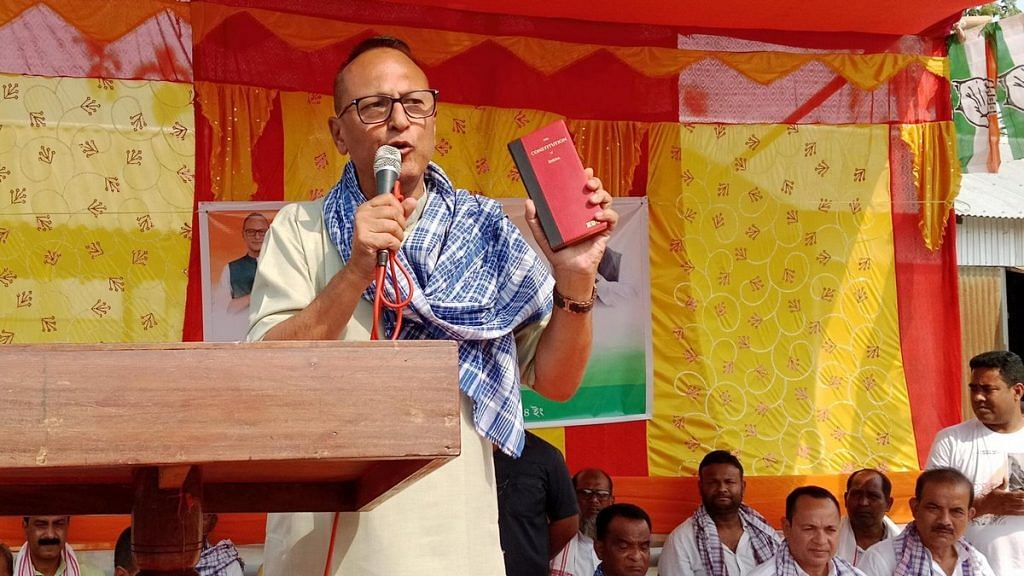
Historically, the Nagaon seat has changed hands between three parties. It remained under Congress control for nearly 25 years post-independence, later shifting to the Asom Gana Parishad. The BJP then tasted success here, with Rajen Gohain winning four consecutive terms from 1999 to 2014.
In the lead-up to the second phase of voting on 26 April, CM Sarma spoke at rallies in the Samaguri and Rupahihat assembly segments of Nagaon, attracting huge crowds, with many attendees jiving along with the nimble-footed CM.
When ThePrint visited Nagaon’s Dhing last month, people from different villages were moving from place to place to attend various rallies. Some travelled as far as 10-12km in bicycles, chasing helicopters that landed at campaign grounds and catching up with friends.
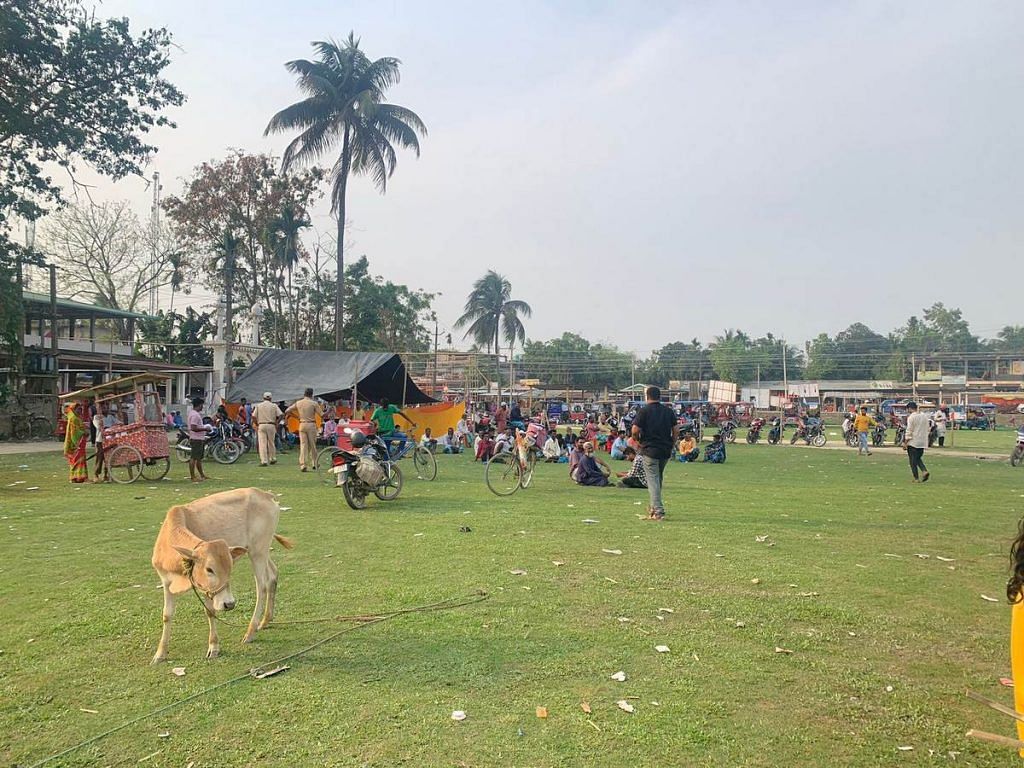
However, 37-year-old Safikul Haque Mollah of Dhing’s Kadamoni Gaon said that too much should not be read into the number of people a rally drew.
“Elections are like festivals,” he said. “People are drawn to poll campaigns because of the colours and sounds.”
‘Muslims are with us’— say all parties
From the AIUDF and Congress to the BJP, all parties claim to have the support of Assam’s Bengali-speaking Muslim voters, albeit for varying reasons.
Speaking to ThePrint, AIUDF Spokesperson Haider Hussain Bora claimed that since Himanta Biswa Sarma became the Chief Minister in May 2021, the state government has seen a backlash from the minority community for “targeting and harassing” the “Miya Muslim” population.
“BJP leaders had earlier said that entering the minority areas of Nagaon, Darrang, Barpeta, and Dhubri districts felt like stepping into Bangladesh or Pakistan,” he said. “And ironically, they require Muslim votes from these very places. No matter how sweet his (Chief Minister) speeches may sound now, Muslims haven’t forgotten anything.”
However, AIUDF general secretary and MLA Aminul Islam conceded that a small section of Muslims who earlier supported the Congress may vote for the BJP this time.
“It is the poorer section of the Muslims who are joining the BJP for all the inducements it has to offer, but even then, they won’t get 10 percent of Muslim votes,” he said.
For incumbent Congress MP from Barpeta, Abdul Khaleque, the biggest obstacle to Sarma’s wooing tactics was Prime Minister Narendra Modi’s recent remarks about Muslims and mangalsutras in Rajasthan.
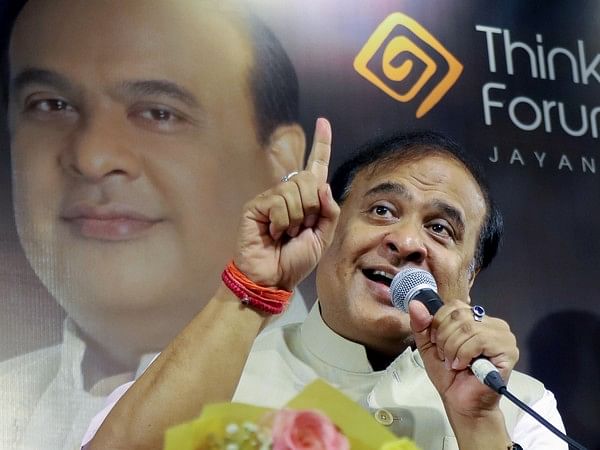
“(The BJP) needs votes, especially for Karimganj and Nagaon. For this reason, the Chief Minister has resorted to Muslim appeasement. But while Sarma is busy campaigning in minority areas, the Prime Minister talks about ‘Mangalsutra’ politics,” Khaleque said.
Meanwhile, senior Trinamool Congress leader Sushmita Dev told ThePrint that a section of Muslims fear they may lose benefits or be evicted “if they don’t vote for the BJP”.
Dev also recalled the 2016 assembly elections, when Sarma had called the contest the Battle of Saraighat—where Ahom kings defeated the Mughals. “Now, he doesn’t talk about Saraighat anymore,” she said. “After consistently denigrating the minority community, (Sarma) is literally begging them to vote.”
Suranjan Dutta, a BJP leader from Assam, admitted that the Nagaon and Karimganj Lok Sabha seats remained a challenge for the BJP, but also claimed that its Muslim support base has increased.
“Muslims are supporting us because of our development initiatives — everyone has got equal benefits under Central and state government schemes. Farmers of Kharupetia and Dalgaon in Darrang district, Pathsala town in Barpeta have all benefited under the PM-KISAN scheme. These people have moved beyond the lies spread by the Congress and AIUDF that BJP is a communal party,” said Dutta. “Muslim women are happy with the government for not allowing child marriage in Assam.”
Political analyst Janardhan Barman concurred that government schemes had led to more Muslims gravitating towards the BJP, especially in rural areas.
“For the first time in Assam, a section of the Muslim community has come forward in support of the BJP. There’s an unprecedented enthusiasm on the ground among these people,” he claimed.
He warned, however, that “appeasement politics” at the cost of “indigenous communities” could cost the BJP. “Assam has so many ethnic communities, conflicting narratives, and many aspirations. But it is expected of the BJP to not move away from the indigenous communities,” he said. “Appeasement politics will have its full implications as seen with the Congress government in the past.”
(Edited by Asavari Singh)

